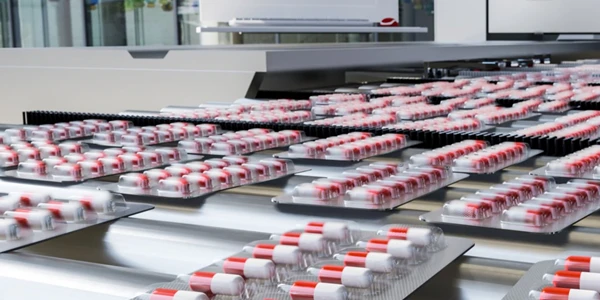Certified Reference Materials and Internal Standards for Cannabinoid Analysis
The quantitative power of an analytical method is often the result the quality and performance of the reference standard
This is true in many applications including the analysis of cannabinoid concentrations in cannabis extracts by HPLC, LC-MS, and other techniques. Although there are now many instrument platforms capable of identifying cannabinoids in raw or processed materials, the majority can only perform qualitative or semi-quantitative potency measurements on their own. True quantitative testing methods require a standard(s), and the closer the reference standard to the actual analyte, the nearer the test is to absolute quantitation.
Certified Reference Materials
Compounds with Certified Reference Material (CRM) in the name are highly qualified materials manufactured and tested to meet ISO/IEC 17025 and ISO Guide 34 international guidelines for reference materials. These materials are tested using validated analytical methods on qualified instrumentation to ensure traceability to SI units of measure.
CRMs are tested for homogeneity and stability and are provided with a certificate stating the CRM property value(s) along with the combined uncertainty of the property value(s). These materials are intended for applications where quantitative accuracy and uncertainty are critical. CRM standard curves can be run alongside test samples to allow direct comparison of detection in the sample backgorund. Using this approach, the CRMs must be "spiked" into sample matrix "blanks" in order to allow sensitive measurement without the potential for bias from endogenous analyte(s) present in the test sample.
Internal Standards
Internal standards are compounds that mimic the sample analyte but are modified to allow distinction of the standard from the analyte that is to be measured. Internal standards are typically added directly to the sample at the further upstream step possible. This ensures that the same steps that impact the analyte also impact the internal standard, thereby minimizing the potential for bias arising from sample preparation.
Highly sensitive analytical instrumentation such as GC-MS and LC-MS can make use of minimally altered internal standards for absolute quantitation. For instance, Δ9-THC-d9 contains 9 deuterium atoms on the pentyl group of Δ9-THC. The resulting shift in molecular weight is suitable for mass spec quantitation, as the peaks of the internal standard and the analyte can be clearly resolved in most instruments without impacting the structure and behavior of the core molecule.
Cannabinoid CRM and Internal Standard Products
Cayman Chemicals offers a range of cannabiis and hemp analytical standards.
- The Phytocannabinol Mixture 1 product is a mixture of 10 common cannabinoids of interest, and is meant to provide high quality standards for HPLC-UV, GC-MS, LC-MS, and GC-FID analysis. The ≥98% pure mixture contains Δ9-THC, Δ8-THC, Tetrahydrocannabinolic Acid, Cannabinol, Cannabidiol, Cannabidiolic Acid, (±)-Cannabichromene, Cannabigerol, Cannabigerolic Acid, and Cannabidivarin.
- Phytocannabinoid Mixture 10 is also listed offering a larger total amount of standard per sample. Individual cannabinoid standards are listed as well, including: Δ9-Tetrahydrocannabinol (THC), Cannabigerol (CBG), and Cannabidiol (CBD), among a multitude of others.
- A wide array of single or multiple cannabinoid mixtures, as well as terpenes, mycotoxins, and pesticides testing standards, are available.
SPEX Certiprep offers a portfolio of standards for cannabis compound analysis.
- The FLAVIN-1 CRM contains a mixture of the most commonly used flavinoids for component and contamination analyis. These include: Catechin, Epicatehin, Apigenin, Biacalin, Catechol, Chrysin, Epigalocatechin, Isovitexin, Kaempferol, Luteolin, Myricetin, Orientin, Quercetin, Rutin, and Vitexin.
- A series of Terpene CRMs are available including: Limonene, alpha-Pinene, beta-Myrcene - as well as less common compounds and complete terpene mixtures.
- CRMs for residual solvents, pesticides, heavy metals analysis - as well as THC and other DEA-controlled cannabinoids - are also available.
Summary
The are a growing number of quality producers of CRMs for cannabis compound and contaminant analysis. Despite the availability of these standards, there remains a discord in the reliability of testing accuracy from lab to lab and across the testing industry. A significant share of this inter-lab variability likely comes from differences in testing instrumentation and methods.
A major development which would bring labs together and offer proficiency improvements across the industry would be adoption of standardardized methods and the creation of certified matrix reference materials. These matrix materials would consist of the same matrix as the sample but would contain known amounts of the analytes of interest. For other industries such as food and beverage, US National Industries of Standards and Technology (NIST) provides reference matrix materials. These include pesticides and other comtaminants in everything from grains and cereals to fruits, vegetables, and other matrices. Although NIST has been working on the issue of matrix reference materials, the formulations are not yet available and in some cases - such as THC - are heldup by federal legality issues that contain to challenge the testing industry.
As the cannabis industry matures, analytical testing labs with have a greater need for quality reference materials and internal standards for cannabinoid identification and potency testing. Tools like those detailed above - and creation of certified matrix reference materials - will help drive the quality control, GMP, and safety areas of cannabis processing and testing.
Updated March 2022










